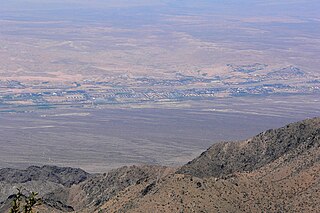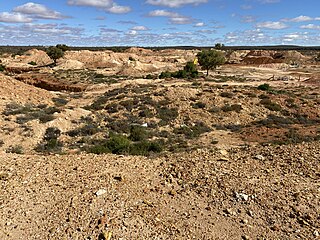Related Research Articles

Opal is a hydrated amorphous form of silica (SiO2·nH2O); its water content may range from 3 to 21% by weight, but is usually between 6 and 10%. Due to its amorphous property, it is classified as a mineraloid, unlike crystalline forms of silica, which are considered minerals. It is deposited at a relatively low temperature and may occur in the fissures of almost any kind of rock, being most commonly found with limonite, sandstone, rhyolite, marl, and basalt.
Allan Wesley Eckert was an American novelist and playwright who specialized in historical novels for adults and children, and was also a naturalist. His novel Incident at Hawk's Hill (1971) was initially marketed to adults and selected by Reader's Digest Condensed Books. A runner-up for the Newbery Medal, it was afterward marketed as a children's novel and adapted by Disney for a television movie known as The Boy Who Talked to Badgers (1975).

In political and sociological theory, the elite are a small group of powerful people who hold a disproportionate amount of wealth, privilege, political power, or skill in a group. Defined by the Cambridge Dictionary, the "elite" are "those people or organizations that are considered the best or most powerful compared to others of a similar type."

The Acorn class was a class of twenty destroyers of the Royal Navy all built under the 1909-1910 Programme, and completed between 1910 and 1911. The Acorns served during World War I.

Citrus australis, the Dooja, round lime, Australian lime or Australian round lime, is a large shrub or small tree producing an edible fruit. It grows in forest margins in the Beenleigh area and northwards, in Queensland, Australia.
The Halley's Comet Opal is the largest uncut black opal in the world, according to the Guinness Book of World Records. It is so named because it was unearthed in 1986, a year when Halley's Comet could be seen from Earth. It is the third largest gem grade black opal ever recorded, the largest one extant, and the largest specimen ever found in its region. It was found at Lightning Ridge, New South Wales, Australia by the Lunatic Hill Mining Syndicate. It weighs 1,982.5 carats and is about the size of a man's fist. The Halley's Comet Opal is a very fine specimen, with few flaws or blemishes and a large green and orange 1.6 cm (0.63 in) thick color bar which goes through the opal. Formed about 20 million years ago, it is an example of a nobby, which is a natural lump-shaped opal found only at Lightning Ridge. As of 2006 it was for sale at $1.2 million.

The Flame Queen Opal is perhaps the most famous of all opals. It is the best-known example of "eye-of-opal", an eye-like effect created when opal in-fills a cavity.

Opalite is a trade name for synthetic opalescent glass and various opal and moonstone simulants. Other names for this glass product include argenon, sea opal, opal moonstone, and other similar names. It is also used to promote impure varieties of variously colored common opal.

Planchonella australis, also known by the synonym Pouteria australis, is a medium to tall rainforest tree of the family Sapotaceae native to Queensland and New South Wales, Australia. It is known by the common name black apple, wild plum, yellow buttonwood, black plum and yellow bulletwood.

The Virgin Valley is a valley in northwest Arizona and southeast Nevada on the Virgin River. The Virgin River drains southwest Utah and southeast Nevada; parts of Arizona, especially the Arizona Strip region drain southwards into the Virgin River and Valley.

Slocum stone is an early opal simulant which was briefly popular prior to the introduction of synthetics and less expensive simulants. It was named after its inventor, John L. Slocum (1920–1998) of Rochester, Michigan.

Phaius tankervilleaevar.australis, also known as the common swamp orchid, southern swamp-orchid, swamp lily or island swamp-orchid, is a species of orchid endemic to eastern Australia. It is an evergreen, terrestrial herb with large, crowded pseudobulbs, large pleated leaves and flowers that are reddish brown on the inside and white outside.

Amanita nothofagi is a species of fungus in the family Amanitaceae. Endemic to New Zealand, the species was first described by mycologist Greta Stevenson in 1962. The fruit bodies have dark brown caps that are up to 13 cm (5.1 in) in diameter and covered with patches of soft greyish-brown scales or warts. The gills underneath the cap are crowded together, free from attachment to the stem, and white, becoming tinged with yellow in age. The stem of the mushroom is 4–14 cm (1.6–5.5 in) long by 0.5–2.5 cm (0.2–1.0 in) thick, and has a ring. The spore print is white, and individual spores are spherical to ellipsoid, measuring 7.5–9 by 7.5–9 micrometres. The mushroom may be confused with another New Zealand species, A. australis, but can be distinguished by certain characteristics. Amanita nothofagi is a mycorrhizal species, and grows in association with native New Zealand trees such as Southern Beech.
The Galaxy Opal is the world's largest polished opal, certified by the Guinness Book of World Records in 1992. It was found at the Boi Morto Mine in Brazil in 1976. The finished opal weighs approximately 3,749 carats, or 0.75 kg. It was carved from a grapefruit-sized piece of rough stone weighing 5,205 carats by Scott Cooley into a shape resembling a child's head. The weight of the finished stone was beyond the capacity of any gem measuring scale at the Gemological Institute of America and an approximation of its weight in carats had to be determined using a postal scale. The stone measures 14.0 by 10.2 by 4.1 centimetres. It is currently part of a private collection.

Dudleya attenuata is a species of perennial succulent plant known by the common name taper-tip liveforever, native to Baja California and a small portion of California. A rosette-forming leaf succulent, it has narrow pencil shaped leaves that can often be found covered in a white epicuticular wax. The thin, sprawling stems branch to form the clusters of rosettes, with plants creating a "clump" up to 40 cm wide. The small flowers are white or yellow, with 5 spreading petals. It is a diverse, variable species that extends from the southernmost coast of San Diego County to an area slightly north of the Vizcaino Desert, hybridizing with many other species of Dudleya in its range. Some plants with white or pinkish flowers were referred to as Orcutt's liveforever, referring to a former subspecies split on the basis of the flower color.

Flora Haines Loughead was an American writer, farmer, and miner from Wisconsin. She became the "Opal Queen" of Virgin Valley. Flora's son, Allan was the founder of American aerospace company the Lockheed Corporation.

Myosotis australis is a species of flowering plant in the family Boraginaceae, native to New Zealand, Australia and New Guinea. Robert Brown described this species in 1810. Plants of this species of forget-me-not are perennial rosettes with ebracteate inflorescences and white or yellow corollas with stamens that are fully included in the corolla tube or sometimes partly protruded.

Myosotis australissubsp. australis is a subspecies of flowering plant in the family Boraginaceae, native to New Zealand and Australia. Robert Brown described M. australis in 1810. Plants of this subspecies of forget-me-not are perennial rosettes with ebracteate inflorescences and white or yellow corollas with stamens that are fully included in the corolla tube or sometimes partly protruded.

The Yowah Nut is a type of precious opal, found within the Yowah opal fields situated in Yowah, Shire of Paroo, South West Queensland, Australia since the latter part of the 19th century. These opals are known for their distinctive nut-like shape, opalescent patterns, and vibrant colours.
References
- ↑ Leechman, F; The opal book, University of California Press, 1961
- ↑ Eckert, Allan W. (1997). The World of Opals. New York: John Wiley & Sons. p. 147. ISBN 9780471133971.
- ↑ Allan W. Eckert; The world of opals John Wiley and Sons, 1997 p100